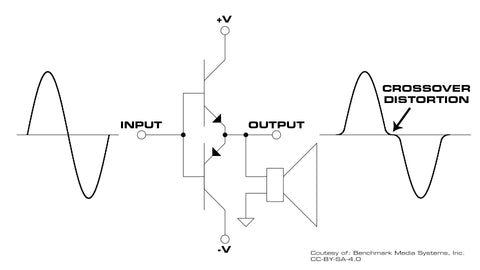- Joined
- Feb 23, 2016
- Messages
- 20,771
- Likes
- 37,636
https://benchmarkmedia.com/blogs/ap...il&utm_term=0_7c8c792ee5-88d1ec426b-108067001
I rather hate to see this. Benchmark stooping to audiophile press tricks to promote their product. Maybe the cost of doing business. Still this paper is rather over the top to promote their undoubtedly fine amplifier. It simply is rather deceptive in presentation.
Show an AB amp with 1 watt distortion as 70 db, then show it has 73 db referenced to 1 watt when used at .01 watt. Well that means it has -53 db distortion which isn't great performance. I would think it not typical. Plenty of amps for a long time have -80 or -90 distortion at 1 watt, and also at lower levels. So they cherry-picked a poor amp for comparison. Benchmark's own amp is apparently very low distortion. I guess saying a good AB amp has inaudible distortion and Benchmark's is lower still doesn't have the same selling ring to it.
Several other parts are deceptively phrased I won't bother to go over each one.
Anyway, thumbs down on Benchmark for this one.
I rather hate to see this. Benchmark stooping to audiophile press tricks to promote their product. Maybe the cost of doing business. Still this paper is rather over the top to promote their undoubtedly fine amplifier. It simply is rather deceptive in presentation.
Show an AB amp with 1 watt distortion as 70 db, then show it has 73 db referenced to 1 watt when used at .01 watt. Well that means it has -53 db distortion which isn't great performance. I would think it not typical. Plenty of amps for a long time have -80 or -90 distortion at 1 watt, and also at lower levels. So they cherry-picked a poor amp for comparison. Benchmark's own amp is apparently very low distortion. I guess saying a good AB amp has inaudible distortion and Benchmark's is lower still doesn't have the same selling ring to it.
Several other parts are deceptively phrased I won't bother to go over each one.
Anyway, thumbs down on Benchmark for this one.




